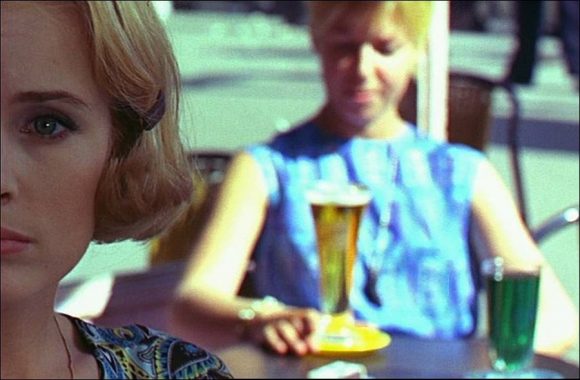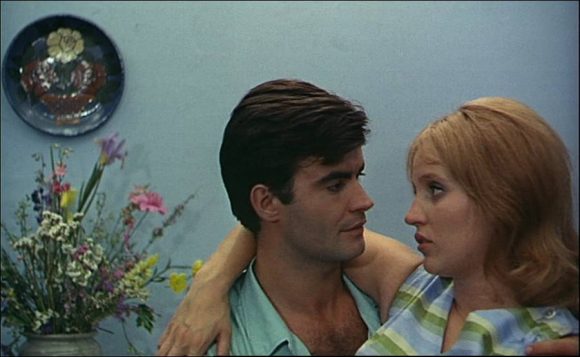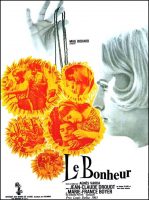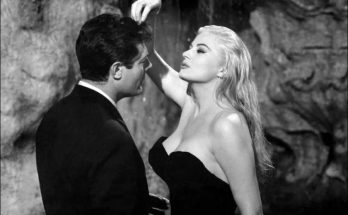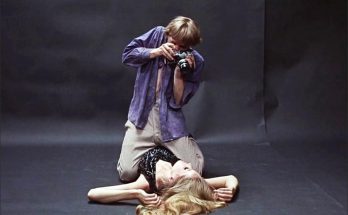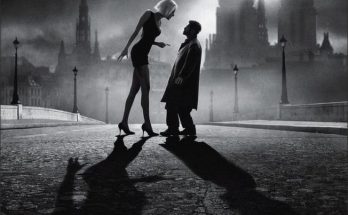“Happiness is to enjoy the strong and creative existence of something that is impossible from the perspective of the world.” A. Badiou.
Le Bonheur movie review. Two women, two love, two different happiness. The rest are colors and words that complete the expression we see in a showcase, on a wall, or in different places. The meanings and the rest still show us where we are going, somehow directing us. Happiness (1965) Agnes Varda’s third film after 5 a 7 at La Point Courte and Cleo is also the first film she shot in color. At the beginning of the story, we see images of a married couple with their children. One day, François goes to the post office and meets a woman there. One more person is added to this present happiness table.
According to Varda’s point of view at that time, perhaps a happiness is never the same as the other; According to some, man loves everyone in other ways and a different happiness is formed from each love. Sometimes these two different love causes a happiness that does not diminish each other but grow exponentially. Besides, while thinking about this, it is necessary to look at the process in the film; According to time, our view of concepts changes and renews. Thus, happiness does not divide, but increases.
Naturalist social drama is defined for the film. The entire irony of the movie does not go through “happiness”, social deficits and reinterprets the bans. While doing this, he does not want to judge people, he creates a narrative on himself through quotations, word games, written concepts. The issue under consideration is not considered as a drama at first, it has been looked at more than this concept and its boundaries and limits. Happiness has a meaning alone, sometimes it makes the question.
On the one hand, one of the most interesting points is that the time spent with the married woman flows more slowly and in harmony, while the time with the other lover flows in sections. One of the differences in the representation of the two women is that the time spent with her husband seems to live a memory long, while the other moments come to the fore and the movements are limited.
Both women have their own color coding. His wife, Therese, explains the nature and settled order we see in the village, which is usually far from the city, in accordance with the theme of horizontal growth. The color we see intensely in it is red; According to some sources, the use of this color is a warm and reassuring color. Likewise, we see the couple’s children dressed in red. On the other hand, Emilie is associated with city life, and blue is in the foreground.
She is a woman who lives alone, tries to regulate her home, struggles with life independently. All of these aside, Varda sometimes separates the scenes with colored boards. We see a world coded in colors, from Francoise’s clothes to stage transitions. It is inevitable to make this game with the arrival of colors. The skeleton of the film is established with a concept that enlivens the movement.
The scene where we see all of this clearly is the dance scene at the heart of the movie. Here we see three corners of a love triangle. Varda here uses three different transitions in the subconscious; the colors are blue, white and red, that is freedom, equality and fraternity. Each ‘board’ continues in a double section; so almost 12 seconds. While doing this, it is discussed during the Varda period, because it is not one of the first provocations implemented in this film. In this ‘subconscious quarter’, which we come across in the final, we can see the real shares of the use of color in a plastic way.
At the end, we can clearly understand that the other woman replaces the spouse upon the incidents that the children’s clothes turn blue. Apart from all these reviews, we can evaluate it from a different angle when the movie is watched today. Happiness perhaps makes a harsh criticism of free love. At the same time, it is a work created with them, not decorated with colors somewhere between growth, change and irony. Therefore, it is very pleasant to try to catch them and surrender to this world. This theme, which is interesting in its way of processing today, has been left somewhere in history, perhaps unprecedented.
Le Bonheur (1965)
Directed by: Agnès Varda
Starring: Jean-Claude Drouot, Marie-France Boyer, Marcelle Faure-Bertin, Manon Lanclos, Sylvia Saurel, Marc Eyraud, Christian Riehl, Paul Vecchiali, Yvonne Dany, Claire Drouot, Sandrine Drouot
Screenplay by: Agnès Varda
Production Design by: Hubert Monloup
Cinematography by: Claude Beausoleil, Jean Rabier
Film Editing by: Janine Verneau
Costume Design by: Claude François
Makeup Department: Serge Groffe
Music by: Jean-Michel Defaye
MPAA Rating: None.
Distributed by: Columbia (France), Clover Films (1966) (USA)
Release Date: February 10, 1965
Visits: 131
